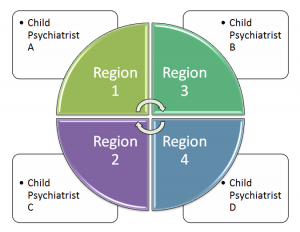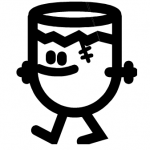Concern has been raised that the proposed DSM5 changes to the criteria for autism may reduce the number of individuals who meet criteria for the diagnosis and are thus entitled to services. You can see a previous blog posting from April that looks at some of those concerns. The new criteria reduce the number of domains of impairment from three to two with communication deficits now subsumed under social impairments.
This new study encompassed three separate samples totaling 4,453 children with established DSM-IV PDD diagnoses as well as 690 individuals with other non-PDD diagnoses such as language disorders and ADHD. Items from the Autism Diagnostic Interview – Revised and Autism Diagnostic Observation Schedule were mapped onto the new DSM5 criteria to calculate sensitivity and specificity.
The sensitivity of the new DSM5 criteria was found to be high overall and generally over .9 depending on the informant source and number of symptoms present. Specificity was found to be lower, often around .4 to .6 based on how it was calculated specifically.
The authors concluded that the new criteria will be able to diagnose accurately a wide array of children with an Autistic Spectrum Disorder. Few children with a current DSM-IV Autism Spectrum Disorder would be excluded under these new criteria. While specificity was not as strong, the authors noted that the upcoming definition should improve the ability to distinguish ASDs from other non-spectrum disorders.
This study should be reassuring to some that the new DSM criteria will not “undiagnose” many individuals with current Autistic Spectrum diagnoses. In making these claims, however, these studies somewhat ironically trigger the question of why then major changes to the criteria need to happen in the first place if so few people will be affected. Nevertheless, there is hope that the revised definition will also help those without an ASD diagnosis to receive the most appropriate diagnostic label and thus intervention.
Reference
Huerta M, et al., Application of DSM-5 Criteria for Autism Spectrum Disorder to Three Samples of Children With DSM-IV Diagnoses of Pervasive Developmental Disorders. Am J Psychiatry 2012:169:1052-1064







